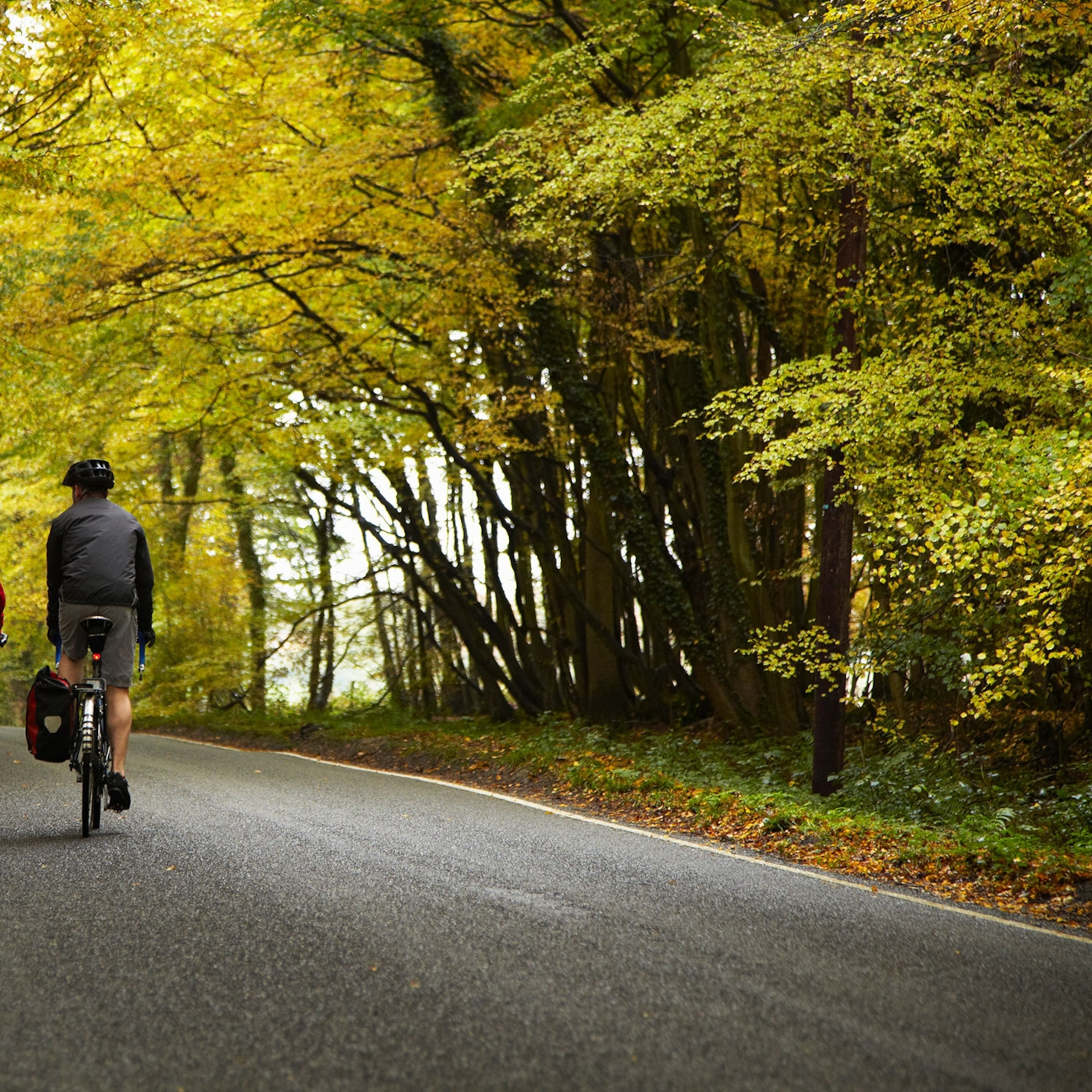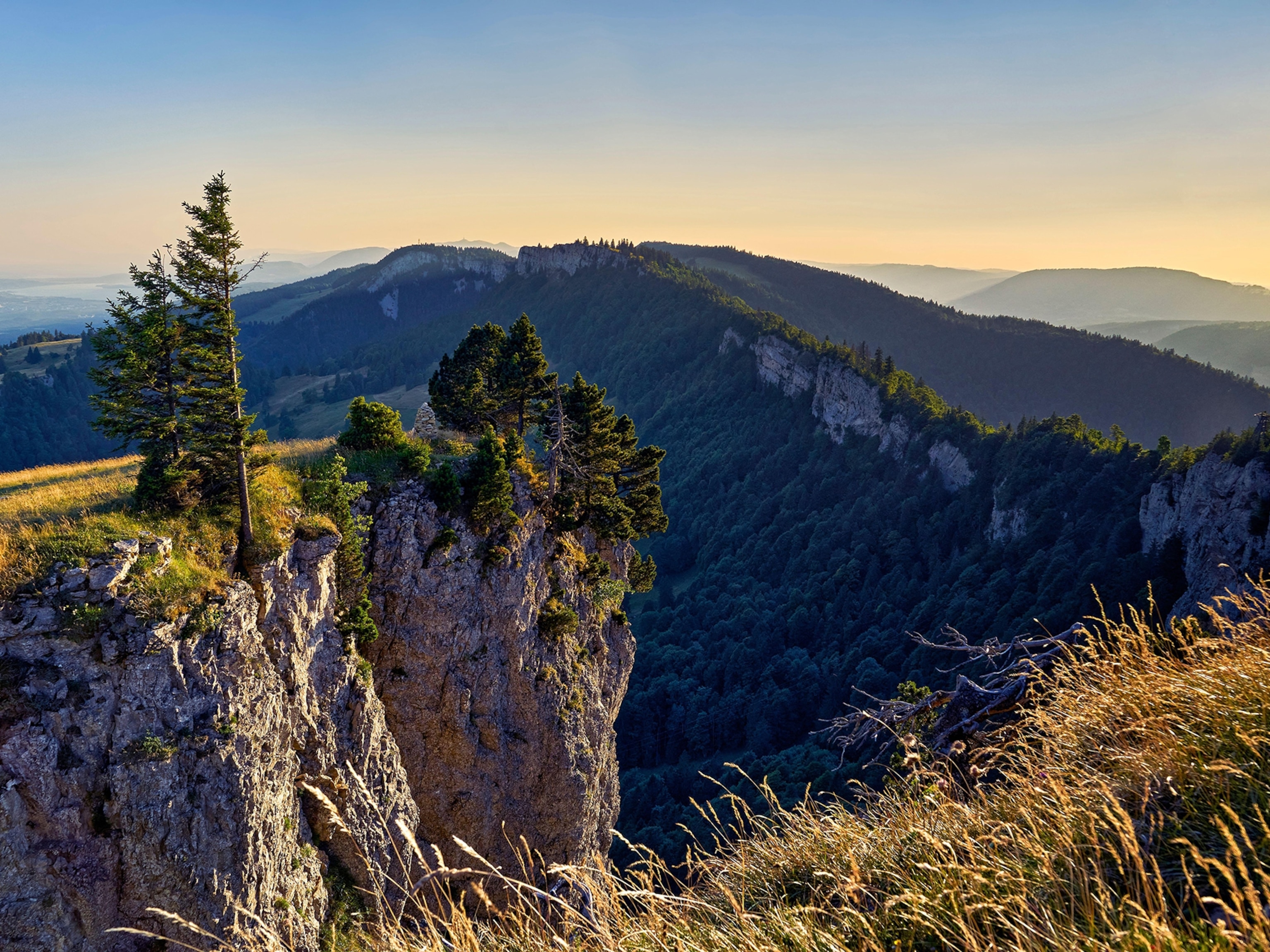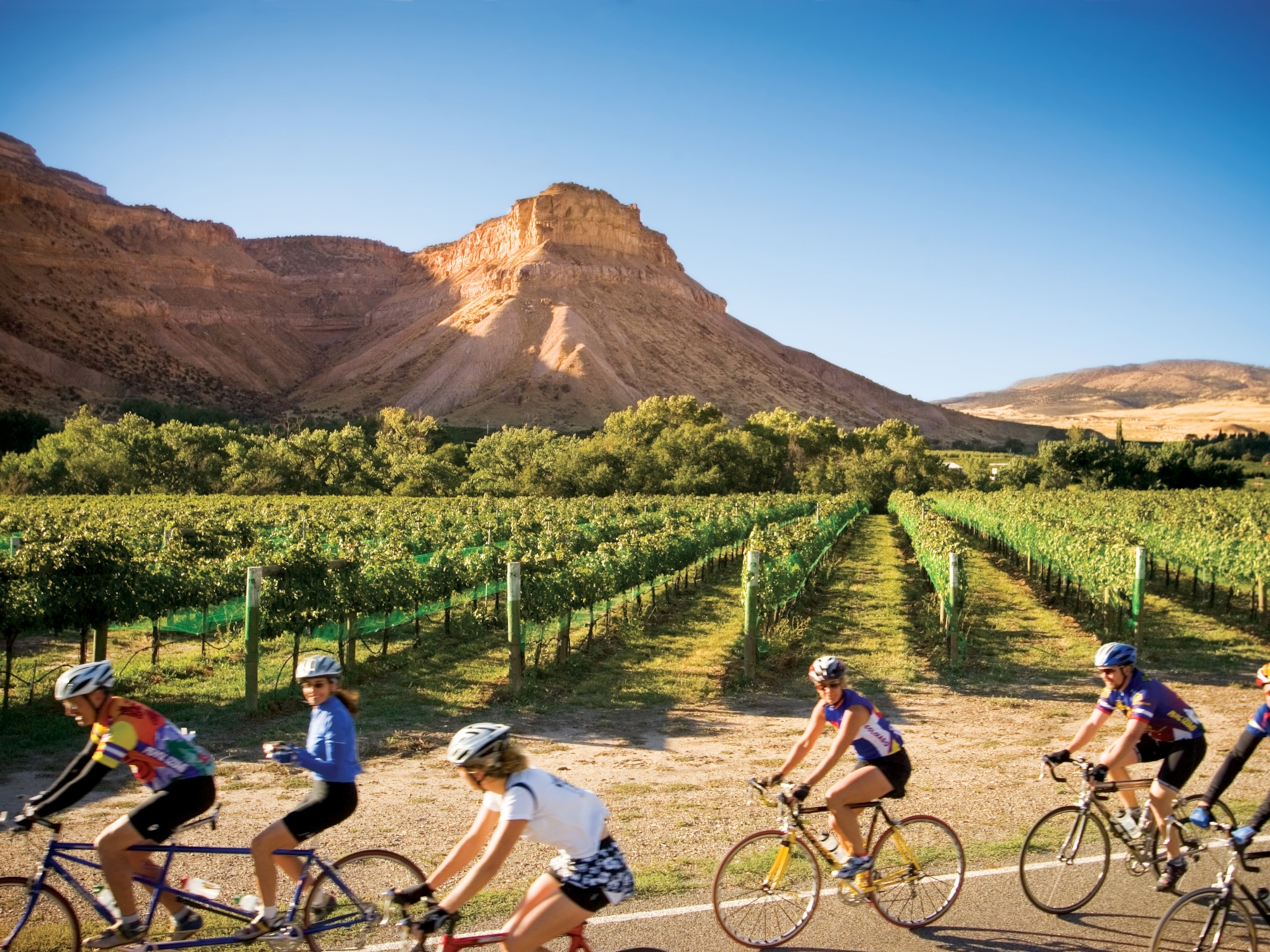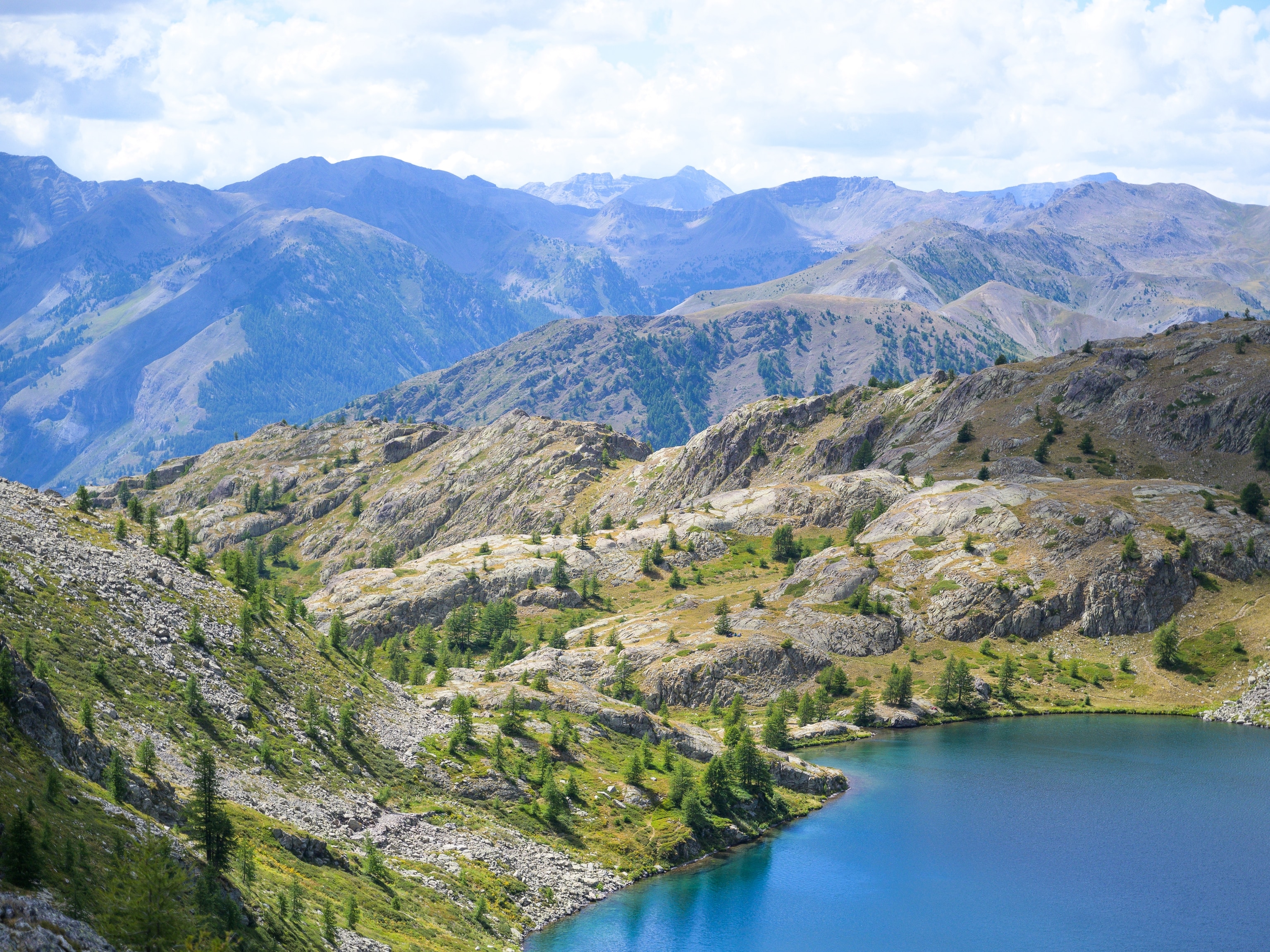
Tanzanian Cycling Adventure Puts a New Spin on Safaris
Think outside the jeep and hop on two wheels to explore some of Africa's best parks.
Minutes into our cycling group’s first meeting, someone shares a popular YouTube video of a mountain biker getting taken out by a gazelle while riding through African grasslands. Everyone laughs, and then Justaz Mollel, the tour leader on this 13-day bike trip through Tanzania, informs the group that the clip was shot in Arusha National Park, where we’ll start our adventure the next day. Silence.
Turns out, the 2011 GoPro video was actually filmed in South Africa, but point taken: Wild, unpredictable animals will be roaming freely as you pedal through some of Africa's most beautiful landscapes. The joys and challenges of trading a jeep or bus—how most people safari—for two wheels is why this Intrepid trip has been nearly sold out during its inaugural year. People are lining up to be among the first to bike in northern Tanzania's Arusha National Park, the country's smallest safari park at 212 square miles.
Mollel, an Arusha native and past Mount Kilimanjaro guide, was recruited to launch the new bike route, which covers around 180 miles of dusty, rewarding trails. And with five built-in rest days across the region, the trip also allows for plenty of Big Five photo opportunities in Serengeti National Park and Ngorongoro Crater.
Here are 10 reasons why you should pedal your way through Tanzania’s national parks.
But first, coffee
Nothing like a fresh brew from one of the world's top coffee producers (15 percent of Tanzania's coffee is exported to the U.S. annually) to jump-start your adventure. Take a short drive from Arusha to Tengeru cultural village, founded in 2004, for a quick tour of Mama Gladness' plantation, home to 14 species of banana, Arabica coffee beans (buy a bag for later!), and handcrafted furniture using papyrus from Lake Victoria. The environmentally conscious property relies on green energy produced by two cows, whose daily dung powers up to 20 lamps and 10 fire pits. Use a fire pit to roast newly harvested beans and enjoy a cup with a delicious home-cooked meal of lentils, rice, avocado, and mashed plantains. Don't overeat because from here you embark on your first of eight rides through the parks.
Bike with an armed escort
The YouTube clip above confirms it's a zoo out there—sans cages. Hence, the gun-toting park ranger leading the way in his 4x4 through Arusha National Park on day two. It's more for show than necessity. “We could cycle without a ranger, but making our passengers feel safe is priority,” Mollel says. The first eight miles, out of 25 on the bike today, will be your introduction to the locals, including giraffes on the left, buffalo on the right, and … look out, an antelope in front! “It jumped in the middle of the road, maybe three feet from her,” says Mollel of a cyclist who encountered an antelope on a recent tour. “She had a lot of fun seeing it,” he says.
Fight the urge to stop and take photos or catch your breath (warning: the first three miles gain more than 1000 feet). You're in the wild, so keep moving. No lions here, but there are leopards and hyena, which generally won't attack unless provoked. If you need to rest, hop in the support vehicle trailing you, then join back in later.
Settle in at Mkuru Training Camp

After a short, but challenging bike ride on day two, you’ll arrive at Mkuru Training Camp, situated at the base of the country's second highest peak, Mount Meru, an active volcano that last erupted in 1910. The camp boasts safari-style tents, real beds, electricity, and hot showers—thanks to buckets of boiled water. The bathroom-with-a-view—the stunning savannah replaces the missing the fourth wall—adds a dreamy touch. The best part: The low-impact camp doubles as a research, education, and training center for resident Maasai and Meru tribes looking to adopt sustainable practices.
Savor some smooth riding
After day three's rocky start—eight miles of short, steep hills on loose gravel and sand pits—transfer to a sleek, paved road for the 28 miles to Longido. The mostly downhill section of highway that connects Tanzania to Kenya is a welcome reprieve, inviting speeds that may otherwise seem elusive on the treacherous dirt paths. Despite being a main road, there's little traffic and lots to see. Keep an eye out for ostrich crossings and spear-carrying Maasai (ask before taking photos). Pull into the octagonal Tembo Guesthouse for the night and learn more about this nonprofit boarding school created to support Maasai girls—offering education, community support, and alternatives to early marriage and circumcision.
Roll with the African massage
Day four brings the bumpiest 28 miles yet. The relentless ripples in the road will force you to pedal pole, pole (the nation's unofficial tagline, meaning “slowly slowly” in Swahili). And it's all good, there's no rush. Nervous riders might want to invest in a kit with built-in armor, like the protective gear from G-Form. While padding isn't mandatory, helmets are, according to Intrepid's rules. Opt for a white helmet, like the Specialized Ambush Comp, to avoid absorbing the equatorial sun's heat.
After three hours of what locals affectionately call the “African massage” thanks to so much corrugated gravel, hop on the support bus for a scenic drive—albeit still bumpy—to the wide open plains surrounding Ol Doinyo Lengai, or Mountain of God in the Maasai language. The active volcano last belched in 2007 and is set to go off again any day now, reports geophysicists monitoring the unstable mountain. Some visitors attempt a sunrise hike to the top (7,650 feet), but considering its imminent eruption, camping in the area for two nights feels risky enough.
Rest at a desert oasis

No biking on day five means you can lounge by the pool or under a shady tree at the lush green oasis of Lengai Safari Lodge, set atop a hill overlooking the East African Rift Valley. Keep an eye out for nearby baboons hanging out in the mornings. If you can't sit still, take a local tour to the shallow, highly acidic Lake Natron, the breeding ground for 2.5 million flamingos.
Along the way, visit the famed Laetoli and Engare Sero sites, where you'll find human footprints from 5,000 to 19,000 years ago. Other roadside attractions include wildebeest, cattle, zebra, and giraffe that won't mind when your driver decides to blast Vanessa Williams' “Save the Best for Last” over the jeep stereo. Afterward, trek to a stunning waterfall before returning to camp for dinner and one more evening in the shadow of Mountain of God.
Sleep in the Serengeti
Get your biking fix on barren, gravel roads for about two hours on day six before you have two days off in Serengeti National Park. Earn bragging rights for camping here without armed guards. Hakuna matata! You'll be safe in your double-occupancy, heavy-duty safari tent. Just don't leave anything attractive outside your door, including smelly shoes (cackling hyenas went to town on a pair this summer).
The Serengeti does safari the ol' fashioned way: via jeep or truck. You'll be grateful for the extra barrier between you and the leopards, lions, and other badass beasts during your dawn and dusk drives. Swahili terms like twende (let's go), simama (stop), asante sana (thank you very much), and sawa sawa (all good) will come in handy when communicating with your driver. If you want to switch up your perspective, consider taking a sunrise hot air balloon ride followed by champagne breakfast once back on the ground.
- National Geographic Expeditions
Master the game ... drive
From the Serengeti, head to the Ngorongoro Conservation Area for more safari action on day nine. Trust us, it doesn't get old. What makes this UNESCO-protected site extra special is its eponymous crater—a deep, volcanic ravine made up of freshwater and alkaline lakes, highland plains, and woodlands.
One of the world's largest intact calderas, the Ngorongoro Crater formed its unique ecosystem some three millions years ago when a giant volcano (believed to be as tall as Kilimanjaro) imploded. Sinking to a depth of 2,000 feet, the base covers about 100 square miles and is home to about 25,000 large animals, including the endangered and elusive black rhino. From the backseat of a 4x4, look for any wildlife you might have missed in the Serengeti or want to see more of (warning: you might capture some intimate moments, like big love from horny hippos).
Secure your souvenirs
Because bringing something home is part of the lure of travel, you'll enjoy exploring the local markets in the village of Mto wa Mbu, or River of Mosquitos, which consists of 120 nomadic tribes. Bike down a long, windy, paved road (feather the breaks and don't get distracted by the roadside baboons) from Panorama Safari Camp. Local guides can take you to the village’s banana plantation, banana beer bar, woodcarving shop, and art gallery. Find a souvenir you love, test your negotiation skills, and take home a piece of this unique community.
Meet the Maasai
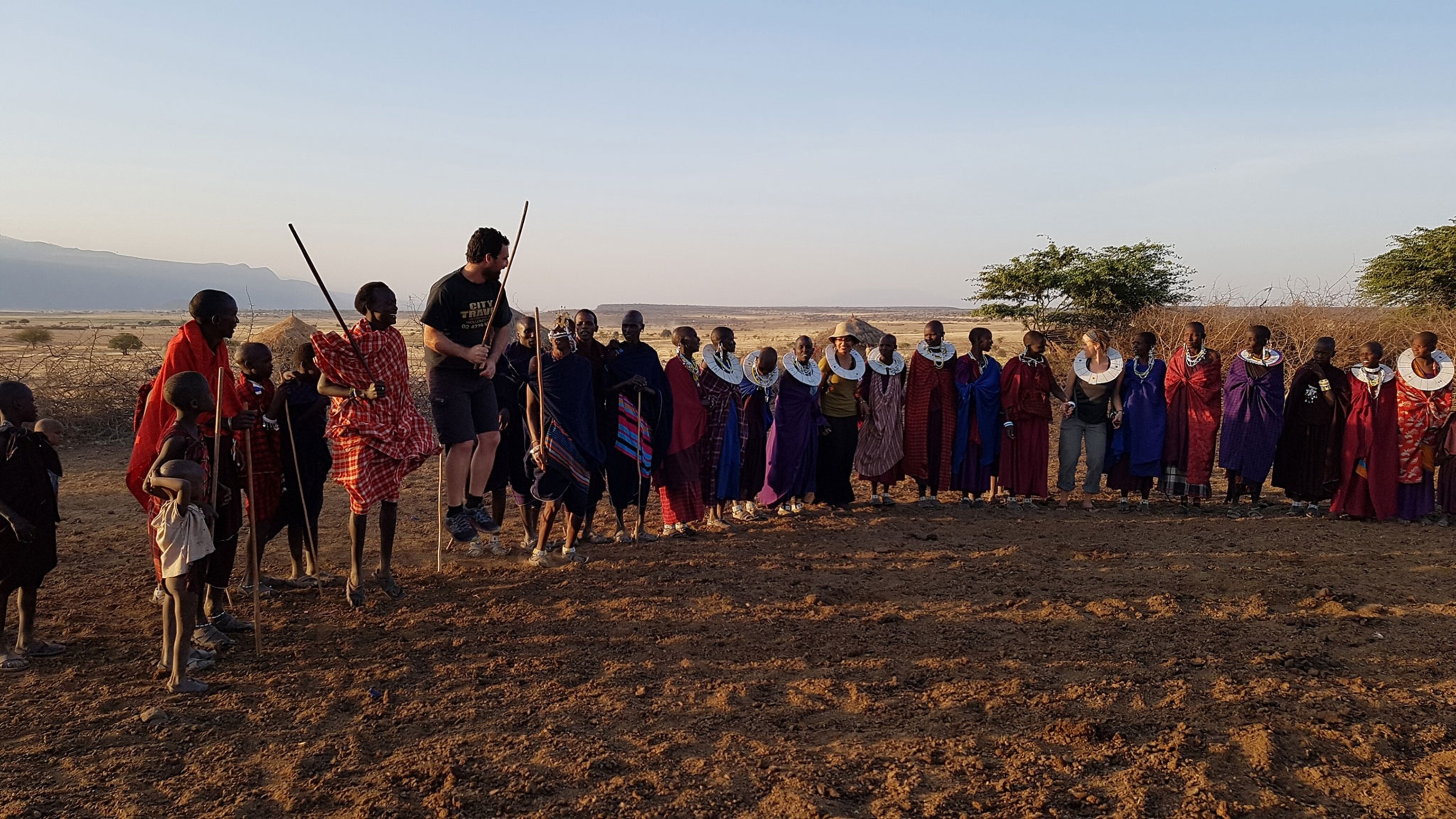
Spend one of your final evenings in Africa with one of the continent's most famous tribes, the Maasai. Dressed now in colorful plaid and draped in beautiful beads, the Maasai were the first to migrate to southern Kenya and northern Tanzania. The semi-nomadic pastoralists will welcome you with a song and dance (be prepared to join!) and a goat or cow sacrifice, which gets cooked over a bonfire. Politely take a bite. “If you want to understand the real life of the Maasai, you should experience it from A to Z. This is a once-in-a-lifetime opportunity,” says Mollel, who is also Maasai.
Save your appetite for dinner back at Panorama Safari Camp, where you'll enjoy a spectacular variety show of dancing, acrobatics, and music. Don't stay up too late. You'll want to wake up for sunrise to see firsthand why the camp, overlooking the breathtaking shores of Lake Manyara, got its name.

